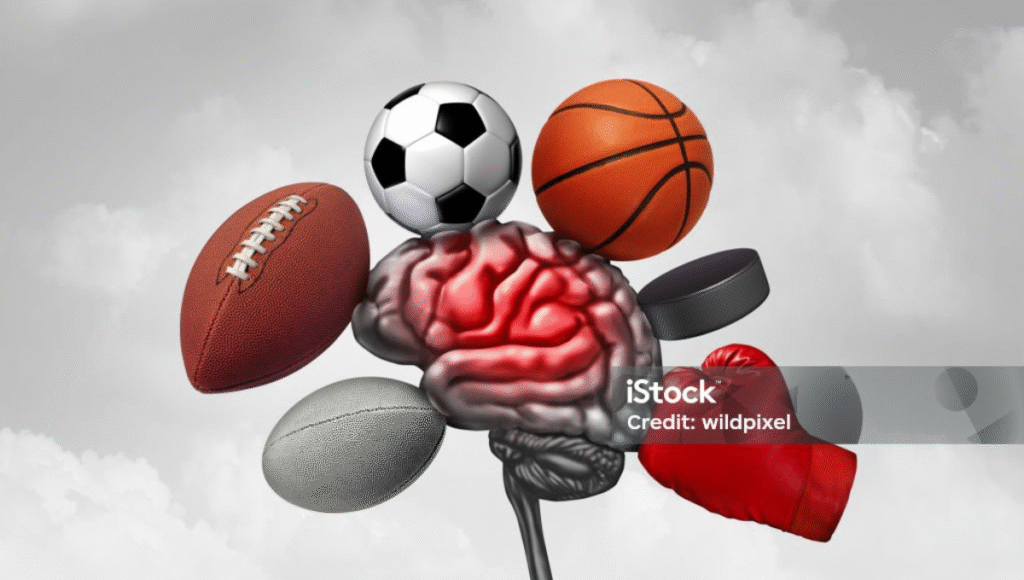
Hidden Brain Dangers of Contact Sports What Young Athletes Need to Know
Every fall, stadiums fill with the cheers of fans, the excitement of competition, and the dreams of athletes chasing victory. From the roar of football games to the fast-paced moves on a soccer field or the ice rink, contact sports bring communities together and inspire countless young players. But behind the glory, there is a hidden cost—a silent threat to brain health that scientists are only beginning to fully uncover.
A new study from Boston University’s Chobanian & Avedisian School of Medicine, published in Nature, has revealed eye-opening evidence that brain damage in contact sport athletes begins long before the well-known brain disease, chronic traumatic encephalopathy (CTE), appears. These findings challenge the way we think about sports-related injuries and raise urgent questions about how to protect young athletes.
A Silent Battle Inside the Brain
For years, researchers have known that repeated head impacts can eventually lead to CTE, a degenerative brain condition that can only be diagnosed after death. But until now, proving the early changes in living athletes remained a mystery.
This groundbreaking research examined the brain tissue of 28 men between the ages of 25 and 51. The participants were grouped into three categories: those who never played contact sports, athletes who played football or soccer but had no CTE diagnosis, and athletes with early-stage CTE.
What scientists found was startling. Even athletes without CTE showed alarming signs of brain injury. Their brains revealed cell loss, inflammation, and damage to tiny blood vessels—all changes that are normally linked with serious disease. In fact, the study showed that repetitive head impacts alone, independent of CTE, can harm the brain in significant ways.
A Striking Discovery: Neuron Loss in Young Athletes
Perhaps the most shocking result was the discovery of a 56% loss of neurons in young athletes. Neurons are the vital brain cells that allow us to think, move, and feel. The loss was concentrated in areas of the brain most vulnerable to mechanical force during head impacts—the very spots where CTE is known to begin.
What makes this finding even more concerning is that it appeared in athletes who had never been diagnosed with CTE. These were otherwise healthy young men who, on the surface, may have looked fine. But inside, their brains told a different story.
“You don’t expect to see neuron loss or inflammation in the brains of young athletes because they are generally free of disease,” explained Jonathan Cherry, PhD, the study’s lead researcher. “These findings suggest that repetitive head impacts cause brain injury much earlier than we previously thought.”
Beyond Concussions: The Real Risk
When people think of sports injuries, concussions often come to mind. But this study highlights that not just concussions, but also the smaller, repeated hits that happen in nearly every practice and game, may be causing long-lasting harm.
Dr. Ann McKee, coauthor of the study and director of the BU CTE Center, emphasized the urgency of these findings: “Repetitive hits to the head, including concussions and the more frequent non-concussive impacts, cause brain damage in young people even before CTE. These findings should serve as a call to reduce head hits in contact sports at all levels, including youth, high school, and college.”
Protecting the Next Generation
This research marks a turning point in how we understand the risks of contact sports. For parents, coaches, and athletes, the message is clear: brain health must come before glory. While sports build teamwork, discipline, and resilience, they should not come at the cost of lifelong injury.
The study offers hope as well. By identifying these changes early, researchers can now work toward better prevention strategies and treatments. It also opens the door for new diagnostic tools that could detect brain injuries in living athletes, long before they spiral into CTE or other devastating conditions.
For young athletes chasing their dreams, the challenge now is to balance passion with protection. Sports will always inspire greatness—but perhaps the greatest victory of all is ensuring every athlete can enjoy a healthy life long after the final whistle.
Disclaimer
This article is for educational and informational purposes only. It is not intended as medical advice. If you or someone you know is concerned about brain health related to sports or head injuries, please consult a qualified healthcare professional.






